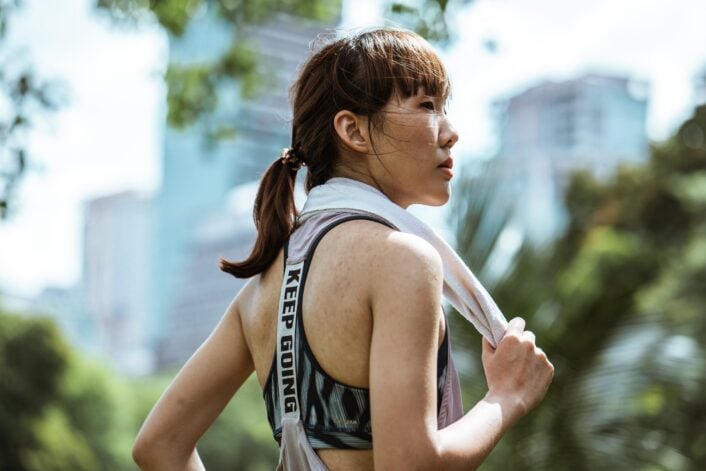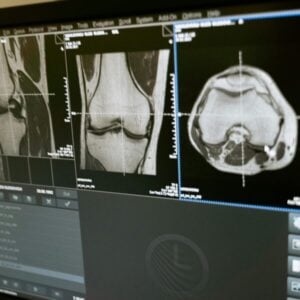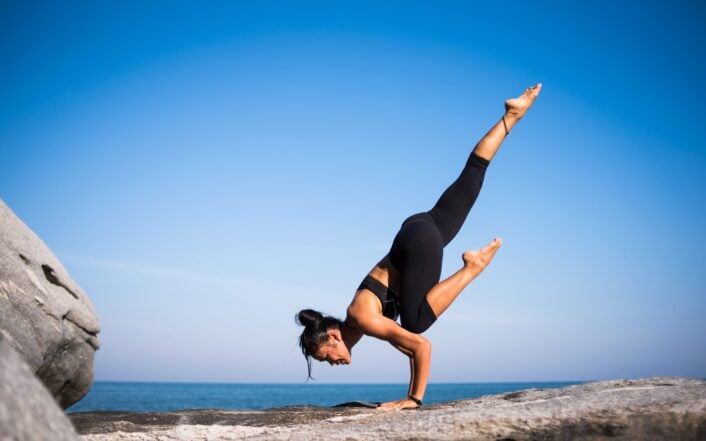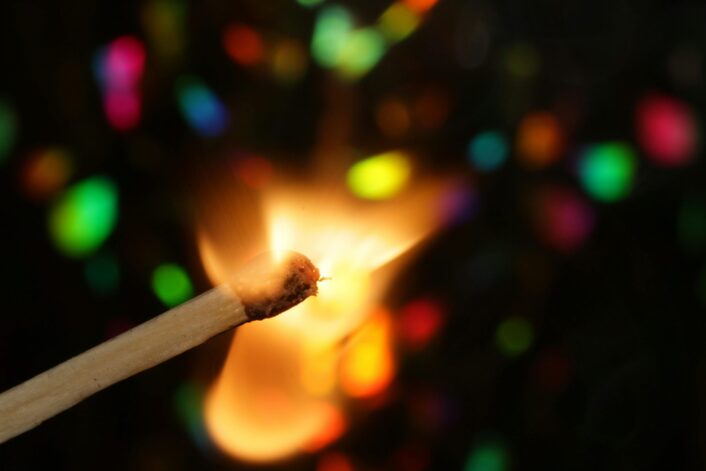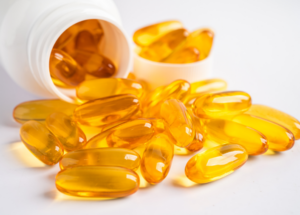Is Depression Genetic? Unraveling the Science Behind Mood Disorders
Aira
on
August 12, 2024
Did you know that depression can be influenced by DNA? In this article, we will discuss how mental health, depression, and genetics are related and how understanding these relationships can help you take action on optimizing your well-being.
Importance of Mental Wellness: Breaking the Taboo
Mental wellness refers to the state of mental well-being that allows people to manage life’s difficulties, develop their potential, study and work effectively, and contribute to their communities.
It is a crucial element of well-being that supports both our individual and group capabilities to decide, form connections, and influence the world we live in. However, it is frequently misunderstood and overlooked.
Is Depression Genetic or Environmental?
Millions of individuals throughout the world have experienced or are currently experiencing depression, a prevalent mental condition that can significantly influence an individual’s quality of life and significantly reduce their ability to become functioning members of society.
According to the American Psychiatric Association, depression or major depressive disorder is a common and serious medical illness that negatively affects how you feel, think, and act. This condition can negatively impact a person’s feelings and emotions towards everything and everyone in their lives. People diagnosed with depression may frequently feel sadness or a loss of interest in things and people they once enjoyed and cared about.
There are tell-tale signs of depression but some of the common symptoms are feeling sad or down, changes in appetite, changes in sleeping patterns, increased fatigue, difficulty concentrating, and even thoughts of self-harm. While depression can affect a person of any age, experts have come to wonder, is there a genetic component to depression? Is depression purely influenced by a person’s environment, including their past traumas and current predicaments?

The truth is depression can be amplified by external variables such as stressful life events and stress, but DNA also has an important role in the development of this condition.
Environmental factors may also greatly contribute to developing depression. Chronic stress, traumatic childhood experiences, and recent life events are a few examples of environmental stressors linked to depression. A few other environmental factors may include:
- Stressful Life Events. Depression may be brought on or made worse by the loss of a loved one, divorce, job loss, financial difficulties, or other significant circumstances.
- Social Isolation. Depression can be exacerbated by a lack of social interaction and a sense of isolation.
- Chronic Illness or Pain. Dealing with ongoing physical health problems or chronic pain can exacerbate depression due to its effects on overall well-being and quality of life.
- Unhealthy Diet. Diets heavy in processed foods and poor nutrition may have a negative impact on brain health and exacerbate depressed symptoms.
- Disrupted Sleep Patterns. Poor sleep hygiene, insomnia, or irregular sleeping habits can all lead to sadness.
- Media and Social Media Influence. Social media comparisons, unrealistic body images, and constant negative news exposure can all have a negative impact on one’s self-esteem and heighten depression symptoms.
- Parenting and Family Dynamics. Depression may arise as a result of dysfunctional family dynamics, parental neglect, or early trauma.
It’s essential to understand how these elements can interact with one another and a person’s genetic makeup to affect how likely they are to experience depression.
You may also like: What is 23andMe Raw Data?
Digging Into The Science: The Genetics of Depression
Untangling the complex web of causes for depression as a mental wellness issue requires an understanding of the genetics of depression. Can people be more predisposed to depression due to their unique genetic makeup? Is genetics just part of the puzzle and if so, how big of a part is it? If genetics has the potential to answer the long-standing questions of experts about how and why depression is developed, it is worth knowing more about the role of genetics even in the common person.
According to rigorous research, depression has a genetic component. People who have experienced depression in their families may be more likely to experience it themselves. Certain genetic differences may increase a person’s susceptibility to depression when they are subjected to particular environmental stressors or causes. Studies on twins and families have revealed that there is a hereditary component to depression. A person with close relatives, such as parents or siblings who have depression, may be more likely to experience depression than those who have no family history.
Scientists have identified specific genes that might be associated with an increased risk of this mental condition. However, no single gene has been found to be solely responsible for depression. It is also difficult to pinpoint a few specific genes with a significant effect on depression risk due to their polygenic character. There are likely several genes that together contribute to depression, each having an impact.
Moreover, genetics and environmental factors can interact and cause, trigger, or amplify depressive symptoms. People with a genetic predisposition may be more vulnerable to specific environmental triggers or aggravators of depression, such as traumatic experiences or long-term stress. In sum, depression results from the interaction of a person’s environment and genetic predisposition, and it is influenced by all of these elements at different stages of development.
Types of Depression
Depression manifests in a variety of ways, each carrying its own distinct weight and being a complex and diverse emotional experience. There are several types of depression, some of which have symptoms that overlap. This is why the correct assessments of mental health professionals are needed when diagnosing depression in any individual.
- Major Depressive Disorder (MDD). The most popular in the group, MDD is the most common type of depression. Symptoms may include low mood, fatigue, diminished interest, and feelings of worthlessness. There are subtypes of MDD:
- Seasonal Affective Disorder (SAD). The feelings of persons who struggle with SAD change with the seasons. This kind of depression, which usually manifests during the short winter days, causes tiredness, changes in appetite, and a melancholic shroud that dissipates as soon as the sun shines again.
- Prenatal and Postpartum Depression. The joy of new life isn’t a universal experience. Prenatal depression is depression that happens during pregnancy. Postpartum depression is depression that develops within four weeks of delivering a baby. Postpartum depression affects some new mothers, casting a shadow over what should be a time of celebration, and adding layers of guilt and hopelessness to an already challenging phase. The risk of developing this type of depression is higher during pregnancy and in the first year after childbirth.
- Atypical Depression. This type of depression frequently goes unnoticed under the garb of exhaustion, excessive sleep, overeating, and rejection sensitivity. The paradox is that despite the underlying sadness, it is possible to have brief moments of enjoyment.
- Persistent Depressive Disorder (Dysthymia). Dysthymia is a milder but longer-lasting form of depression. Symptoms last at least 2 years and have similar symptoms as major depression, but less in severity.
- Bipolar Disorder. A confusing mix of emotions, bipolar disorder alternates between periods of sadness and mania with periods of neutral mood. A bipolar individual’s journey is turbulent because of the manic peaks and depressive depths, with spikes in energy followed by plunges into depression.
- Premenstrual Dysphoric Disorder (PMDD). A heightened form of premenstrual syndrome, PMDD throws a tidal wave of emotions into the lives of some women each month. Severe irritability, anxiety, or depression are some of the symptoms. After your period begins, these symptoms usually go away within a few days, but they can occasionally be so bad that they seriously affect your daily life.
- Situational or Reactive Depression. This particular sort of depression is a typical response to outside conditions that are brought on by life events such as loss, trauma, or stress. Even though it is frequently transient, it can be extremely emotionally taxing.
Is Postpartum Depression Genetic?
A type of depressive disorder that can develop after childbirth is called postpartum depression (PPD), often referred to as postnatal depression. Mood swings, irritability, and feelings of sadness are common in new mothers shortly after giving birth and are commonly referred to as the “baby blues.” Postpartum depression is more severe and pervasive than the “baby blues,” and it can have a significant impact on a mother’s capacity to care for herself and her child. its prevalence is estimated to be between 10% and 15% among new mothers.
PPD symptoms might include ongoing melancholy, exhaustion, changes in eating and sleep patterns, trouble concentrating, feelings of guilt or worthlessness, and in extreme situations, thoughts of hurting oneself or the unborn child. Early identification and treatment of PPD are essential since it can affect a mother’s ability to carry out everyday tasks and form bonds with her child.
The chance of having PPD may have a hereditary component, according to research studies. Women who have family members who have experienced postpartum depression may be more likely to develop depression themselves. Genetics, however, is not the only cause; hormonal changes, psychological factors, lack of social support, and other life stressors all significantly contribute to the development of PPD.
There is still a chance that you could develop postpartum depression even if no women in your family have ever experienced it. Environmental elements also have an impact. For instance, a difficult childbirth could result in postpartum depression. Recognize the danger indicators and risk factors so you can seek assistance as soon as feasible. Risk elements consist of:
- Any previous experience with depression
- Events that caused stress during pregnancy
- Challenging breastfeeding
- Undesired pregnancy
- Infants born with health issues
- Relationship issues with your partner
- A weak system of support
- Financial difficulty
Although having a genetic predisposition may raise the risk, PPD is not a given. Many women with a family history of depression may not experience PPD. Contrarily, some women without a family history of depression may get PPD. Complex interactions exist between environmental and genetic risk factors.
While undoubtedly a challenging and often scary battle for mothers, having PPD does not equate to being a bad parent. Therapy, support groups, lifestyle modifications, and in certain situations, medication, are all possible treatment choices. Early intervention can help moms regain their emotional health and capacity to care for their children while also dramatically improving outcomes.
Is Depression Related to Bipolar Disorder?
Both depression and bipolar disorder are mental health conditions that are related to one another but also have crucial differences. While mood disruptions are present in both illnesses, there are differences in the types and patterns of these changes. Both conditions have similar symptoms such as:
- Mood Episodes. Mood episodes are a feature of both depression and bipolar disorder. Anhedonia or the loss of ability to feel pleasure, a persistently depressed mood, and a number of other symptoms are all characteristics of depression. The same symptoms that characterize depressive episodes in depression also occur in bipolar disorder.
- Impaired Functioning. Both disorders have the potential to drastically reduce a person’s capacity for everyday living, impacting their ability to work, form relationships, and generally enjoy their lives.
- Overlap in Symptoms. During depression episodes, both bipolar disorder and depression might share the same symptoms, such as exhaustion, trouble focusing, and changes in food or sleep.
The key differences between bipolar disorder and major depressive disorder (sometimes also referred to as unipolar disorder) may include the lengths of episodes, varying degrees of symptoms, and the manic episodes that are more commonly attributed to bipolar disorder.
- Manic or Hypomanic Episodes. The existence of manic or hypomanic episodes in bipolar disorder is one of the main distinctions. People who go through these periods report higher mood, greater energy, impulsivity, racing thoughts, and occasionally a reduced need for sleep. Hypomania is less severe than mania, which can result in reckless behavior and poor judgment.
- Duration of Mood Episodes. Compared to unipolar depression, bipolar disorder’s depressive episodes typically continue longer. Manic or hypomanic phases of bipolar disorder are also frequently shorter than depressed episodes.
- Genetic Factors. Although there is a hereditary component to both disorders, bipolar disorder has a stronger genetic connection. In comparison to unipolar depression, your risk of getting bipolar disorder is significantly increased if your family has a history of the condition.
- Severity of symptoms. Extreme mood swings associated with bipolar disorder can cause more severe disruptions in a person’s life and have a distinct impact on relationships, career, and general functioning.
- Treatment Approaches. There are various treatment modalities. While psychotherapy and, in some situations, medication, can help both disorders, bipolar disorder frequently necessitates the use of certain mood stabilizers to control manic or hypomanic episodes.
It is crucial to remember that a mental health professional must do a complete evaluation in order to diagnose and distinguish between these disorders. People who think they might have either ailment should have a proper evaluation so they can get a proper diagnosis and the right care.
What is Seasonal Depression and is it Genetic?
Seasonal Affective Disorder (SAD), often referred to as seasonal depression, is a type of depression that follows a seasonal pattern. It frequently happens during certain seasons of the year, most frequently in the fall and winter when there are fewer daylight hours. Although less frequently, some people may have SAD in the spring and summer.
Low mood, loss of interest in activities, exhaustion, changes in sleep and appetite, difficulties focusing, and feelings of worthlessness or hopelessness are just a few of the symptoms that SAD and major depressive illness share. But what distinguishes SAD is its predictable pattern of onset and remission depending on the cyclical nature of the seasons.
Research suggests that there is a genetic component to seasonal affective disorder, although the genetic links are not as well-established as they are for some other types of depression. Studies have shown that individuals with a family history of mood disorders, including SAD, might be at a higher risk of developing the condition themselves.
It’s crucial to remember that, although genetics may play a part in a propensity for SAD, environmental circumstances can have a big impact. It is believed that one of the main causes of SAD is diminished exposure to natural sunlight during particular seasons. Incorrect levels of neurotransmitters like serotonin and melatonin can cause circadian cycles to be disrupted, which can affect mood and sleep.
Seasonal affective disorder is more common in people with bipolar disorder. Mania episodes in some bipolar patients may be connected to a particular season. For instance, spring and summer might trigger mania symptoms or a milder type of mania (hypomania), as well as worry, agitation, and impatience. They could also go through periods of depression in the fall and winter.
Can SAD be treated? Much like other types of depression, SAD has varying treatment options. Experts believe that focusing on addressing the disruption in sleeping patterns and increasing the body’s exposure to natural light may help treat or manage SAD. Some of the more common treatments include:
- Light Therapy. Phototherapy, another name for light therapy, entails exposure to glaring artificial light that mimics the effects of natural sunlight. The symptoms of SAD are frequently improved by this therapy.
- Psychotherapy. People can learn coping mechanisms for controlling SAD symptoms with the aid of cognitive-behavioral therapy (CBT) and other talk therapies.
- Medication. Antidepressant drugs may occasionally be recommended in order to treat SAD symptoms.
- Lifestyle Changes. Getting regular exercise, eating well, and controlling stress can all help with mood enhancement and SAD symptom management.
Symptoms | Major Depression Disorder | Postpartum Depression | Bipolar Disorder | Seasonal Depression |
Anxiety | Yes | Yes | Yes | Yes |
Feelings of Isolation | Yes | Yes | Yes | Yes |
Manic Episodes | No | No | Yes | Possible |
Changes in Sleep Patterns | Yes | Yes | Yes | Yes |
Change in Appetite | Yes | Yes | Yes | Yes |
Exhaustion or Fatigue | Yes | Yes | Yes | Yes |
Guilt | Yes | Yes | Yes | Yes |
Dissociation | Possible | Possible | Yes | Possible |
Which Is the Strongest Genetic Link Associated with Depression?
According to research, the neurological underpinnings and pathogenesis of depressive illnesses are still unclear, despite extensive research over the past few decades. Based on family, twin, and adoption studies, genetic variables play significant roles in the onset of MDD and may provide crucial insights into the disease’s pathophysiology.
While there isn’t a single “strongest” genetic link connected to depression, scientists have discovered a number of genetic markers and candidate genes that are thought to contribute to its onset. It’s crucial to remember that no single gene can entirely explain depression, which is likely affected by a mix of several genetic variants.
However, the most studied single nucleotide polymorphisms (SNPs) are SNP rs782212 (gene: Intergenic), SNP rs4810896 (gene: LOC105372648-ARFGEF), and SNP rs7973260 (gene: KSR2). The most prevalent form of genetic variation in people is called an SNP. They entail a single nucleotide alteration at a specific location in the genome’s DNA sequence. These differences are what give people their unique characteristics, and they also have an impact on different traits, illnesses, and susceptibilities.
Intergenic Gene (SNP rs782212). SNP rs782212 is situated in an area of the genome that does not code for a particular protein, which is referred to as an “intergenic” region of DNA. Although research has demonstrated that intergenic areas can still perform regulatory roles, altering the expression of nearby genes or contributing to the three-dimensional folding of chromosomes, they were previously thought to be non-functional and were not given much attention. Numerous genetic variations for major depressive disorder (MDD) have been discovered through genome-wide association (GWA) research, however, the majority of these variations are intergenic. The intergenic regions have been shown to contain about 54% of long non-coding RNAs (lncRNAs).
LOC105372648-ARFGEF Gene (SNP rs4810896). The gene identification LOC105372648-ARFGEF has a long non-coding RNA (lncRNA) component and a mention of the “ARFGEF” gene. A family of RNA molecules known as long non-coding RNAs (lncRNAs) are those that are longer than 200 nucleotides yet do not code for proteins. Instead, they participate in a number of cellular regulatory processes including chromatin remodeling, gene expression regulation, and interaction with other cellular elements. Some lncRNAs have been linked to particular illnesses and cellular functions. ADP-ribosylation factor guanine nucleotide-exchange factor (ARFGEF) is a protein that is encoded by the “ARFGEF” gene. ADP-ribosylation factors (ARFs), which are GTPases that participate in intracellular membrane trafficking and vesicle formation, are regulated by this protein. By enabling the exchange of GDP for GTP, ARFGEFs activate ARFs, and as a result, regulate their activity.
KSR2 Gene (SNP rs7973260). Obesity and metabolic characteristics are linked to the KSR2 gene and the SNP rs7973260. On chromosome 12, the KSR2 (Kinase Suppressor of Ras 2) gene produces a protein that participates in intracellular signaling pathways. KSR2 is a component of the Raf-MEK-ERK pathway, which plays a crucial role in the communication of signals from cell surface receptors to the cell nucleus, ultimately influencing functions like cell proliferation, differentiation, and survival. The KSR2 gene contains the single nucleotide polymorphism (SNP) rs7973260. SNPs, such as rs7973260, are variations in the DNA sequence that may affect how a gene functions or how it is expressed. Some SNPs have links to specific traits, illnesses, or drug reactions.
Regardless of genetic markers, anyone can experience depression, and most people may experience depression at least briefly in their lifetimes. If you think you have a unique genetic makeup that is susceptible to depression, a DNA test is your best bet. Experts believe that while Major Depressive Disorder (MDD) is yet to be scientifically proven to be hereditary, there are similar mental health conditions to MDD that are passed down from one generation to the next.
If you want to take genetic testing for mental well-being, LifeDNA can give you insights into genetic inclination towards depression, loneliness, and other unique traits based on your DNA. Check out our personalized DNA plans to learn more.
Neuroticism: Are Personality Traits Genetic?
Aside from depression, one other important trait that can impact your well-being is Neuroticism. Neuroticism is one of the Big Five personality traits. It is a long-term and relatively stable tendency to be in a negative or anxious emotional state, especially in response to threats, frustration, or loss.
Individuals who score high in this trait tend to experience mood swings, anxiety, irritability, and sadness. Neuroticism can also be damaging to the quality of your life and reduce your lifespan.
Depending on your DNA, you may have an increased likelihood of being moody and experiencing feelings such as anxiety, worry, fear, anger, frustration, envy, jealousy, guilt, depression, and loneliness.
Get your mental health DNA test today for Neuroticism and unlock LifeDNA’s Personality & Cognition Report.
LifeDNA’s Personality & Cognition Report - A Walkthrough
If you or a loved one are struggling with mental wellness challenges, consider exploring the potential benefits of genetic testing.
By gaining a deeper understanding of your unique genetic makeup, you can better understand your genetic inclination towards mental wellness issues, and ultimately, make more informed decisions about your well-being.
Take charge of your mental wellness journey today and see what genetic testing can do for you.
Summary
- Depression or Major Depressive Disorder (MDD) is a common and serious medical illness that negatively affects how you feel, think, and act.
- Depression has a genetic component. People who have experienced depression in their families may be more likely to experience it themselves.
- MDD manifests in a variety of ways. There are several types of depression and some of have symptoms that overlap.
- There is no single genetic link that is solely connected to depression. Scientists have discovered a number of genetic markers and candidate genes that are thought to contribute to the onset of this mental condition.
- No single gene can entirely explain depression. Depression is likely affected by a mix of several genetic variants.
- Mental health professionals must do a complete evaluation of an individual potentially diagnosed with MDD in order to assess and correctly treat the patient.
*Understanding your genetics can offer valuable insights into your well-being, but it is not deterministic. Your traits can be influenced by the complex interplay involving nature, lifestyle, family history, and others.
Our reports and suggestions do not diagnose or treat any health conditions or provide any medical advice. Consult with a healthcare professional before making any major lifestyle changes or if you have any other concerns about your results.
References
- https://www.psychiatry.org/patients-families/depression/what-is-depression
- https://www.ncbi.nlm.nih.gov/pmc/articles/PMC6065213/
- https://med.stanford.edu/depressiongenetics/mddandgenes.html
- https://pubmed.ncbi.nlm.nih.gov/33778956/
- https://www.ncbi.nlm.nih.gov/pmc/articles/PMC4369539/
- https://www.nimh.nih.gov/health/publications/seasonal-affective-disorder
- https://www.ncbi.nlm.nih.gov/pmc/articles/PMC6138666/
- https://www.ncbi.nlm.nih.gov/pmc/articles/PMC3077049/#:~:text=The%20serotonin%20transporter%20gene%20and,MDD%20%5B17%E2%80%9319%5D
*Understanding your genetics can offer valuable insights into your well-being, but it is not deterministic. Your traits can be influenced by the complex interplay involving nature, lifestyle, family history, and others.
Our reports have not been evaluated by the Food and Drug Administration. The contents on our website and our reports are for informational purposes only, and are not intended to diagnose any medical condition, replace the advice of a healthcare professional, or provide any medical advice, diagnosis, or treatment. Consult with a healthcare professional before making any major lifestyle changes or if you have any other concerns about your results. The testimonials featured may have used more than one LifeDNA or LifeDNA vendors’ product or reports.






